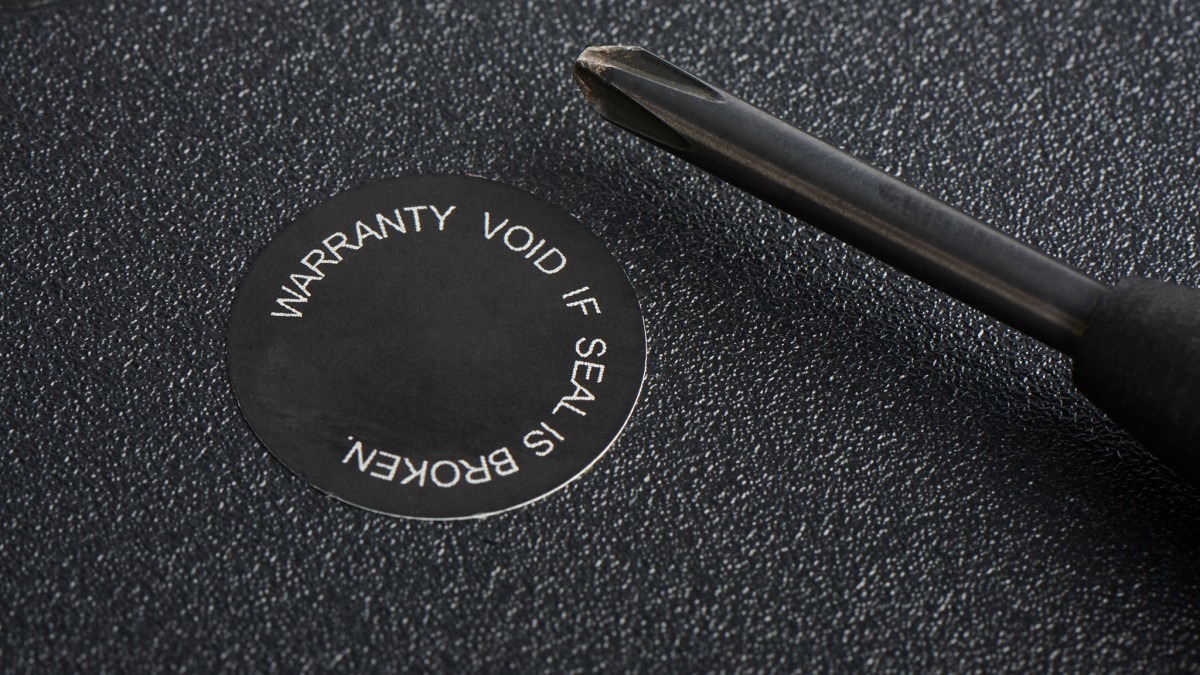
How much do you hate “warranty void if removed” stickers and notices? What it means is that you have to have an ugly label on whatever you’ve purchased in order to keep the warranty void. But it doesn’t only apply to electronics. I’ve seen these stickers on mattresses and even, recently, a bathtub. But is this true? Many companies argue that warranty stickers are necessary to ensure that no one has tampered with a product – from an electronics standpoint. But what happens is that we’re more likely to dispose of the entire device, rather than having it repaired because of that warranty issue.
The big question is whether or not these stickers are legal? According to the FTC, these might not be enforceable after all. In fact, the FTC has sent letters to six companies warning that their stickers are in violation of a longstanding law. Huh? Is it actually violating a law? The letters that the FTC sent out state, “unless warrantors provide parts or services for free or receive a waiver from the FTC, such statements generally are prohibited by the Magnuson-Moss Warranty Act”.

The FTC hasn’t stated which companies they have contacted, but it does give examples of real policies where this is unacceptable:
- “The use of [company name] parts is required to keep your … manufacturer’s warranties and any extended warranties intact.”
- “This warranty shall not apply if this product … is used with products not sold or licensed by [company name].”
- “This warranty does not apply if this product … has had the warranty seal on the [product] altered, defaced, or removed.”
The Magnuson-Moss Warranty Act is a law that governs consumer product warranties and these statements might be considered deceptive under the Act. What’s interesting about this act, is that it’s been in place since 1975, and electronics companies have been using these warranty stickers for a really long time.

The reason for the sticker is to determine if someone has been tampering with the product. Did the product break as a result of some kind of defect, or did it break after the fact because someone tried to fix it? While I understand the rationale for wanting to make this determination, I’m not sure that this is the best way. I remember I once had a Blackberry (yes, I’m that old), and I took it in to be repaired. I was told that it had been exposed to water and that they could “tell” because of some kind of strip on the inside of the phone. While I don’t actually know if that was true – or just the company telling me that I wasn’t eligible for a new phone, but either way, it’s a convincing argument. And one that can be determined without me tampering with it.
This whole idea speaks to a larger issue though. If you crack the screen on your iPhone, you want to get it replaced. But if you do, it voids any warranty that you have with Apple. Is that fair? In my opinion, no. But these companies don’t want you to figure out a way to repair the device yourself. They want you to take the device back to them, so they can charge you for the repair, or get you to buy a new device/piece of hardware. Which isn’t fair. You pay good money for these devices, and life happens. Don’t make us have to keep paying for the same things over and over again.

[…] post What Happens if You Remove the Warranty Sticker? Maybe Nothing appeared first on Saintel […]